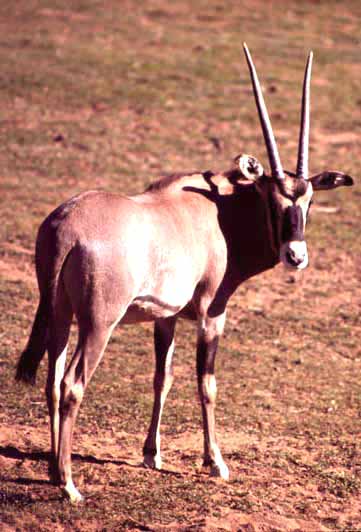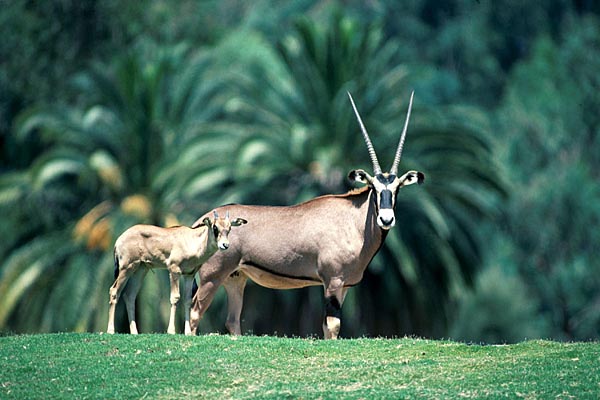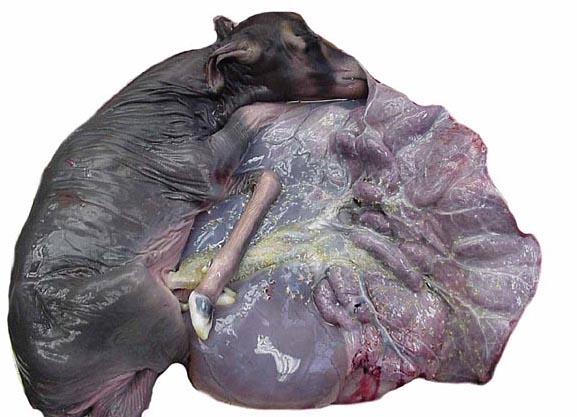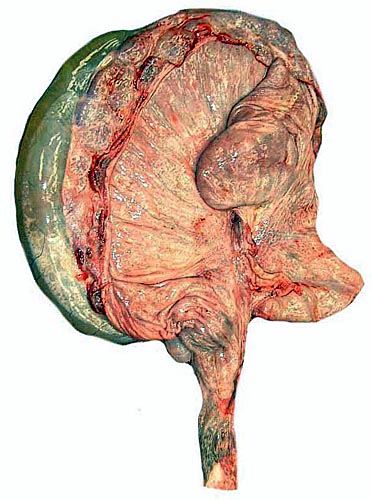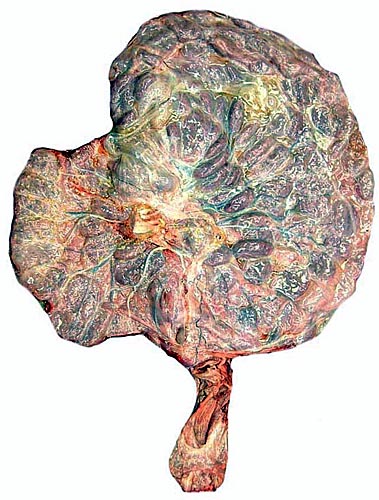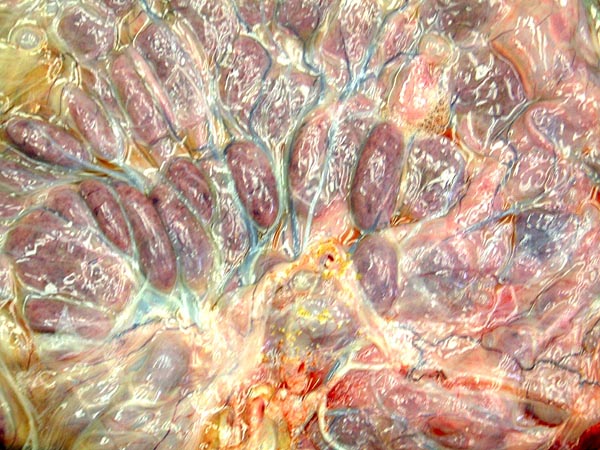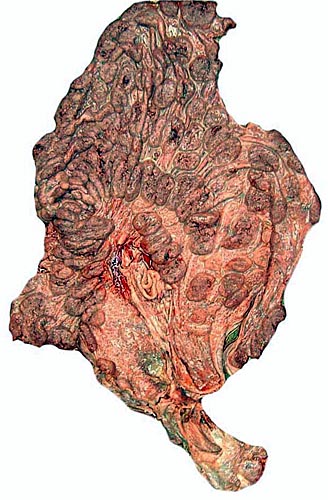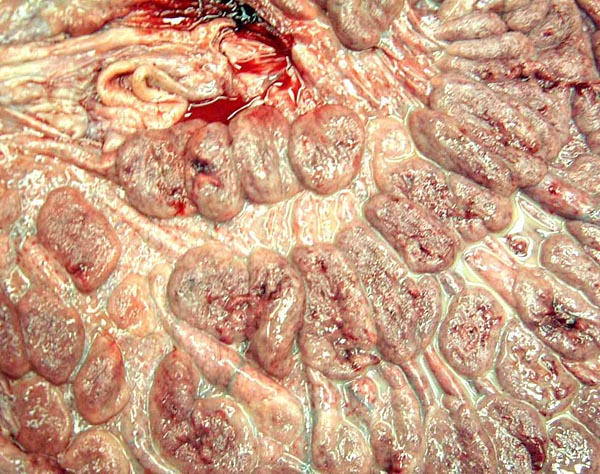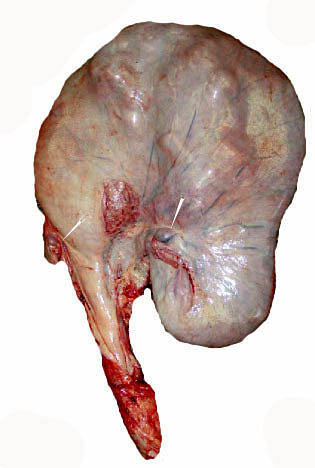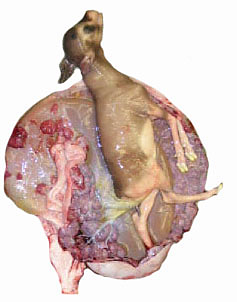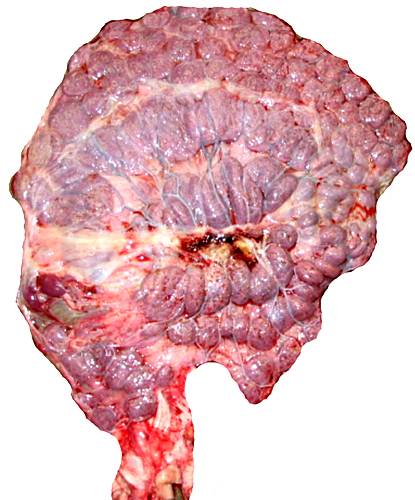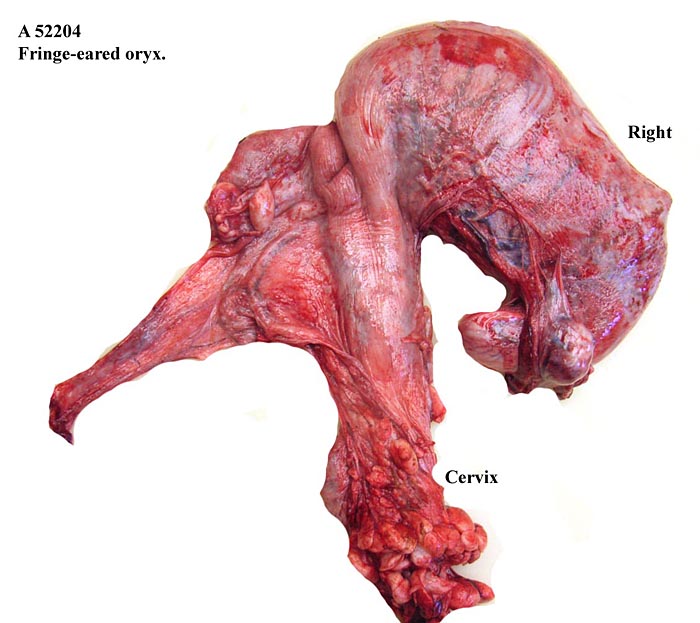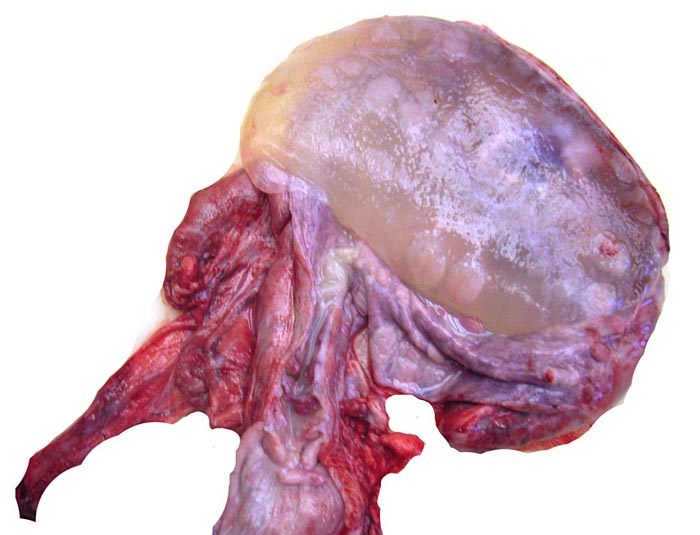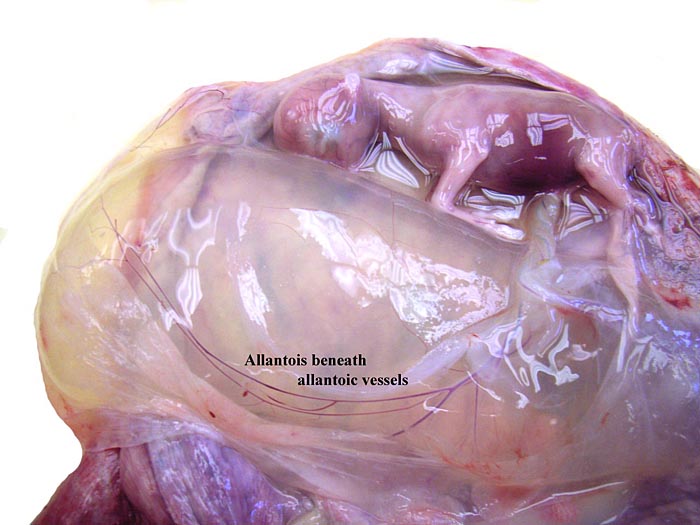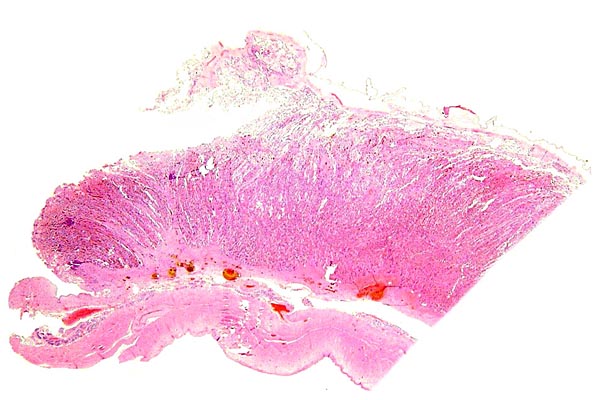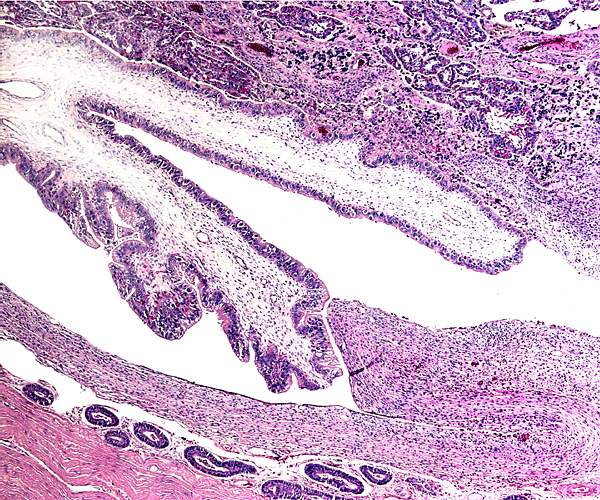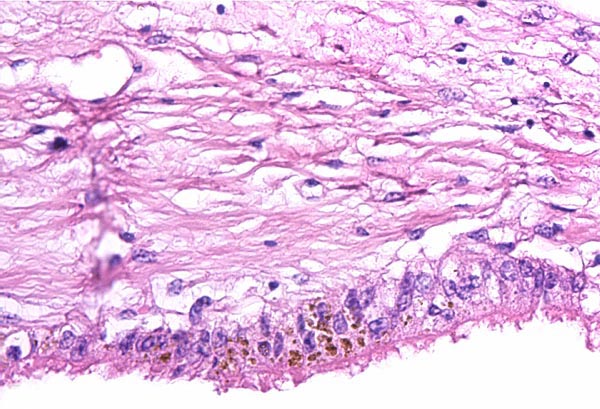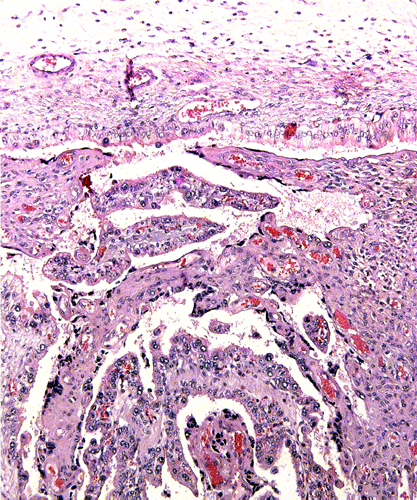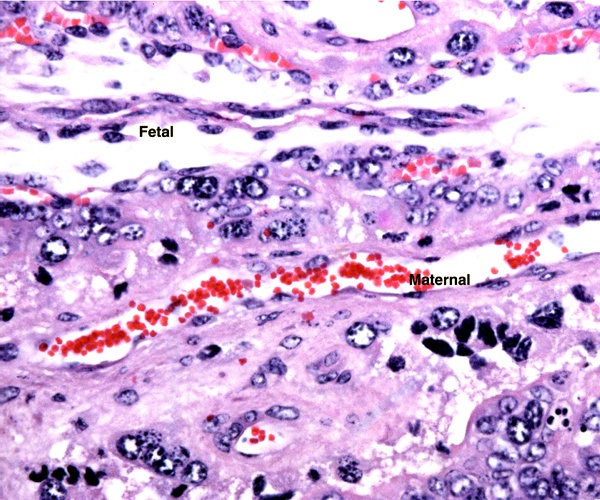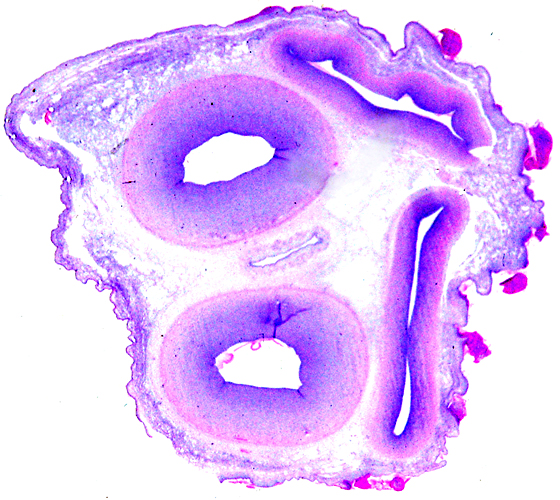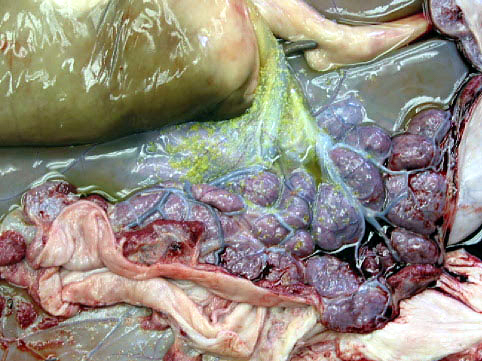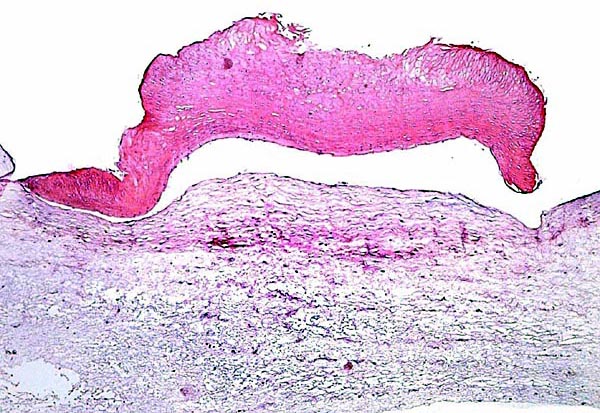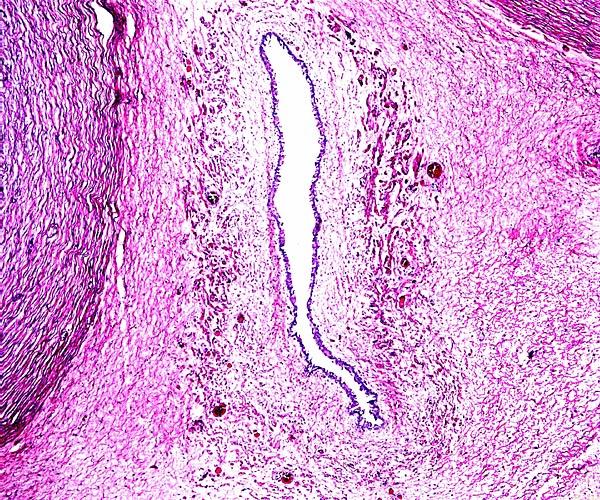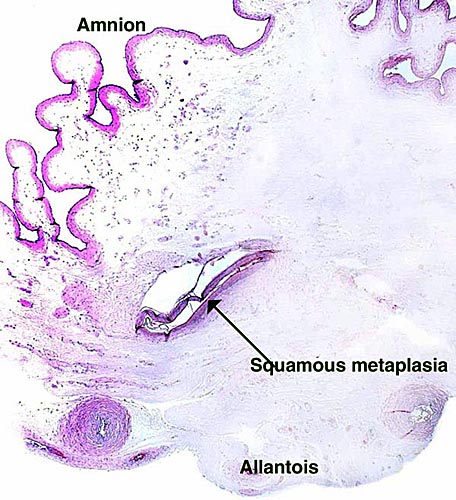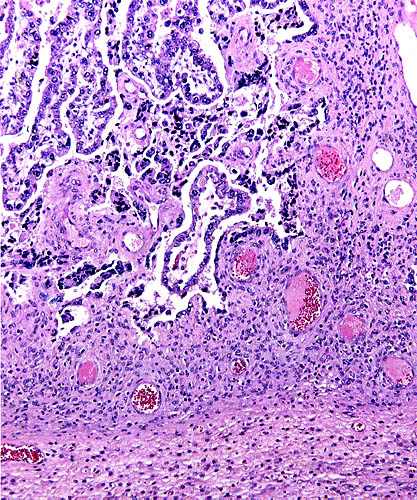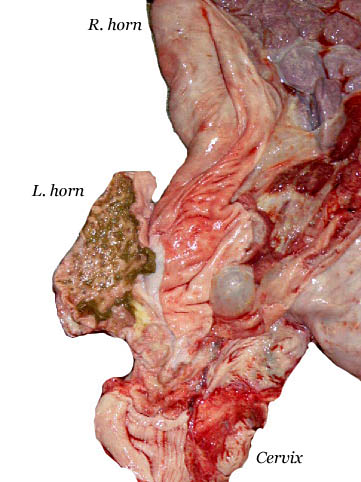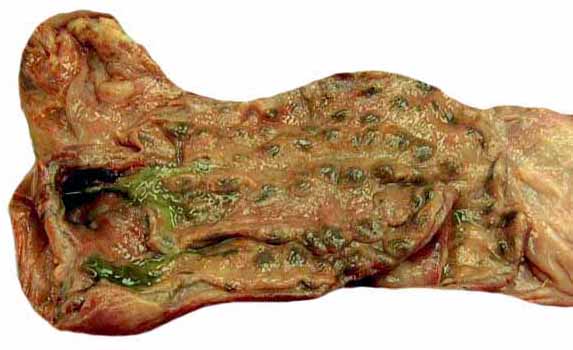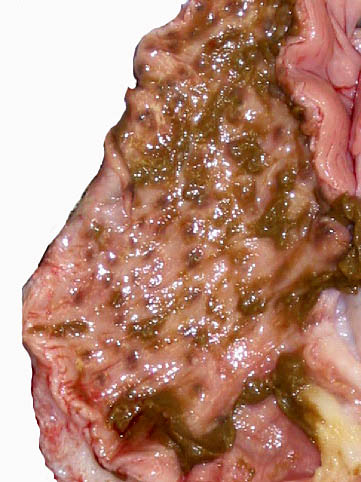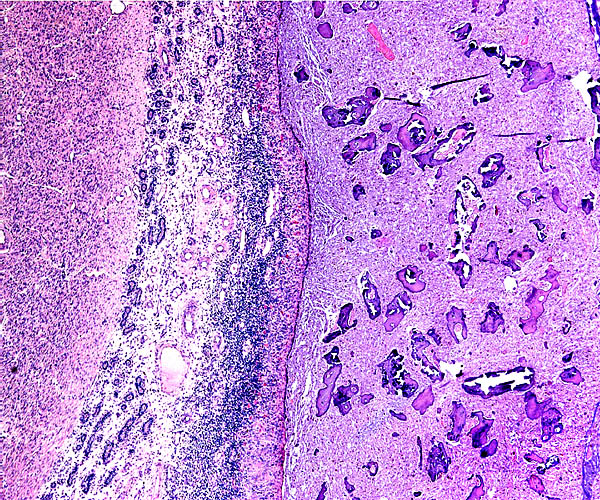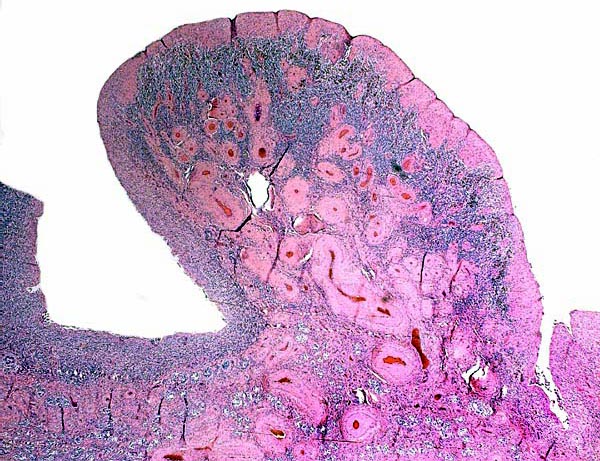11) Various features
No subplacenta exists but the endometrium of the caruncles show an extensive vascular development.
12) Endocrinology
Patton et al. (2001) studied the control of aggression in a bachelor herd of fringe-eared oryx by administering melengestrol. Fecal androgen excretion decreased significantly, as did aggression. The corpora lutea were all in the right ovary which was suitably enlarged; in the third pregnancy the ovary measured 4 cm in greatest diameter, while the left was 2 cm.
13) Genetics
The fringe-eared oryx has 58 chromosomes (Kumamoto et al., 1999). They are very similar in karyotype to those of the other forms of the genus Oryx. A hybrid of fringe-eared oryx and a beisa oryx (Oryx gazella beisa) was reported by Gray (1972).
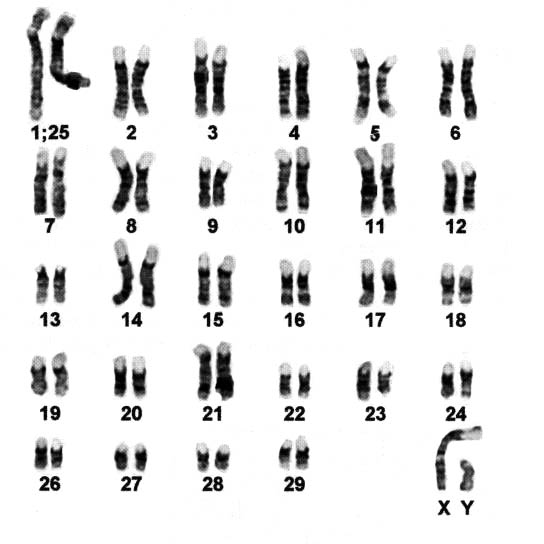 |
Giemsa-banded chromosomes of Fringe-eared oryx (2n=58). |
14) Immunology
No studies are known to me. It is important, however, to point out that most animals, including this oryx, produce enormous quantities of a very thick, tenacious mucus in the endocervical canal during pregnancy. This is essential as it protects against ascending infection from the vagina. The mucus contains many cytokines, antibodies and is also a physical barrier (see Hein et al., 2001 for a study of human cervical mucus).
 |
This is a section of the endocervix from the second specimen showing intense mucus production. |
15) Pathological features
Griner (1983) had extensive experience with oryx species and reported most deaths as being due to trauma, some cases of "bloat" and hemangiomas.
16) Physiologic data
There have been no studies.
17) Other resources
Numerous cell strains of this and related oryx species are available from CRES through contacting Dr. O. Ryder at oryder@csd.edu.
18) Other remarks - What additional Information is needed?
Virtually no endocrinology has been done in this species and the weight and appearance of term placentas are unknown. Early implantational stages should be studied.
Acknowledgement
The animal photographs in this chapter come from the Zoological Society of San Diego. I appreciate also very much the help of the pathologists at the San Diego Zoo.
References
Gray, A.P.: Mammalian Hybrids. A Check-list with Bibliography. 2nd edition. Commonwealth Agricultural Bureaux Farnham Royal, Slough, England, 1972.
Griner, L.A.: Pathology of Zoo Animals. Zoological Society of San Diego, San Diego, California, 1983.
Grubb, P.: Order Artiodactyla, pp. 377-414, in Mammal Species of the World, 2nd ed., D.E. Wilson and D.A.M. Reeder, eds. Smithsonian Institution Press, Washington, 1993.
Hein, M., Helmig, R.B., Schønheyder, H.C., Ganz, T. and Uldbjerg, N.: An in vitro study of antibacterial properties of the cervical mucus plug in pregnancy. Amer. J. Obstet. Gynecol. 185:586-592, 2001.
Kumamoto, A.T., Charter, S.J., Kingswood, S.C., Ryder, O.A. and Gallagher, D.S.: Centric fusion differences among Oryx dammah, O. gazella, and O. leucoryx (Artiodactyla, Bovidae). Cytogenet. Cell Genet. 86:74-80, 1999.
Patton, M.L., White, A.M., Swaisgood, R.R., Sprout, R.L., Fetter, G.A., Kennedy, J., Edwards, M.S., Rieches, R.G. and Lance, V.A.: Aggression control in a bachelor herd of fringe-eared oryx (Oryx gazella callotis) with melengestrol acetate: Behavioral and endocrine observations. Zoo Biol. 20:375-388, 2001.
|
